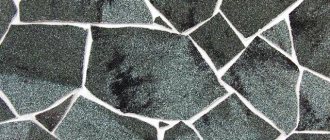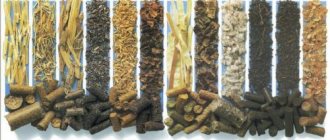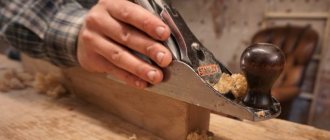You are in the forest. Thick and thin tree trunks crowd around. For a chemist, they all consist of the same material - wood, the main part of which is organic matter - fiber (C6H10O5) x. Fiber forms the walls of plant cells, i.e., their mechanical skeleton; We have it quite pure in the fibers of cotton paper and flax; in trees it is always found together with other substances, most often lignin, of almost the same chemical composition, but with different properties. The elemental formula of fiber is C6H10O5, the same as that of starch; beet sugar has the formula C12H22O11. The ratio of the number of hydrogen atoms to the number of oxygen atoms in these formulas is the same as in water: 2:1. Therefore, these and similar substances were called “carbohydrates” in 1844, that is, substances seemingly (but not actually) consisting of carbon and water.
The carbohydrate fiber has a high molecular weight. Its molecules are long chains made up of individual links. Unlike white starch grains, fiber is strong threads and fibers. This is explained by the different, now precisely established, structural structure of starch and fiber molecules. Pure fiber is technically called cellulose.
In 1811, academician Kirchhoff made an important discovery. He took ordinary starch obtained from potatoes and treated it with dilute sulfuric acid. hydrolysis occurred and it turned into sugar:
This reaction was of great practical importance. Starch and syrup production is based on it.
But fiber has the same empirical formula as starch! This means you can also get sugar from it.
Indeed, in 1819, saccharification of fiber using dilute sulfuric acid was first carried out. For these purposes, concentrated acid can also be used; Russian chemist Vogel in 1822 obtained sugar from ordinary paper by treating it with an 87% solution of H2SO4.
At the end of the 19th century. Practicing engineers have already become interested in obtaining sugar and alcohol from wood. Currently, alcohol is produced from cellulose on a factory scale. The method, discovered in a test tube by a scientist, is then carried out in the large steel apparatus of an engineer.
We will visit the hydrolysis plant. Sawdust, shavings or wood chips are loaded into huge digesters (percolators). This is waste from sawmills or wood processing enterprises. Previously, this valuable waste was burned or simply thrown into a landfill. A weak (0.2-0.6%) solution of mineral acid (most often sulfuric) passes through percolators with a continuous current. It is impossible to keep the same acid in the apparatus for a long time: the sugar contained in it, obtained from wood, is easily destroyed. In percolators the pressure is 8-10 atm and the temperature is 170-185°. Under these conditions, cellulose hydrolysis proceeds much better than under normal conditions, when the process is very difficult. Percolators produce a solution containing about 4% sugar. The yield of sugary substances during hydrolysis reaches 85% of the theoretically possible (according to the reaction equation).
Next, the sugar solution is fermented into alcohol with the help of yeast, which we are already familiar with. This is how ethyl alcohol is obtained from wood. It is called hydrolysis alcohol.
Rice. 8. A visual diagram of the production of hydrolytic alcohol from wood.
For the Soviet Union, which has vast forests and is steadily developing the synthetic rubber industry, obtaining alcohol from wood is of particular interest. Back in 1934, the XVII Congress of the All-Union Communist Party (Bolsheviks) decided to fully develop the production of alcohol from sawdust and waste from the paper industry. The first Soviet hydrolysis-alcohol factories began to operate regularly in 1938. During the years of the second and third five-year plans, we built and launched factories for the production of hydrolysis alcohol - alcohol from wood. This alcohol is now increasingly being processed into synthetic rubber. This is alcohol from non-food raw materials. Every million liters of hydrolytic ethyl alcohol frees up about 3 thousand tons of bread or 10 thousand tons of potatoes and, therefore, about 600 hectares of cultivated area for food. To obtain this amount of hydrolytic alcohol, you need 10 thousand tons of sawdust with 45 percent moisture content, which can produce one sawmill of average productivity per year of operation.
Tips for using biofuels and storage rules
Biogas and briquettes are well suited for home heating, cooking, and will serve as a power source for running a gasoline electric generator converted to gas or a homemade Stirling engine. Charcoal is useful when using a barbecue. Liquid biofuel allows you to use kerosene lamps and stoves without the usual soot, and is also an ideal means for refueling biofireplaces.
Biofuel production technologies do not provide for long-term storage. Liquid fuel becomes saturated with water in a relatively short period of time, pellets and briquettes become damp, separate, and crumble. It is advisable to use the resulting biofuel immediately.
As mentioned above, the use of biofuels does not have any disadvantages. The main shortcomings arise due to imperfect designs of installations for its production.
Selection of raw materials and sources of their supply
Another, no less important, smoothly follows from the previous question - the choice of the types of raw materials used for production and the sources of their production.
The production of alcohol by distilling mash can be carried out using a variety of raw materials. First of all, it is sugar. Its productivity is maximum: 10 kg of such raw materials gives approximately 5-5.5 kg of the finished product, that is, pure alcohol.
However, it is also the most expensive. In addition to sugar, you can use various starch-containing products: grains (rice, corn), as well as sugar beets and fruits (apples, grapes, plums, etc.). It is also possible to produce alcohol from potatoes. From wheat you can get up to 3 liters of alcohol, and from beets/potatoes and fruits only about a liter.
In any case, the choice is quite large. In addition, you can use several different sources at once, as well as mix brews obtained from different components. This is unimportant if you produce technical alcohol. But in the production of drinking alcohol, and especially of high quality (extra and higher categories), such mixing is unacceptable. The raw materials must be of high quality (and not rotten or frozen fruits, beets, etc.) and single-component.
Choosing the type of alcohol produced and distribution channels: to whom, how, for what purposes
Alcohol is used in a wide variety of industries: both food enterprises (for the production of alcoholic beverages and not only), and pharmaceutical, chemical and other factories.
Manufacturers of cosmetics, perfumes and other things also need it. The demand for this product is high, and therefore you can choose the direction that is more interesting to you. In addition, when deciding what type of alcohol to produce - technical or drinking, you should analyze this market in your region. Don’t be surprised if there are major competitors: the business is still profitable. Therefore, make a qualitative overview of the main sales channels and compare planned production volumes with existing demand. You may have to export your products to other nearby regions, which means additional costs (in particular, transport) and new competitors.
It is also possible that you yourself will want to expand your business in the future, and the production of alcohol will grow into something larger, for example, into a wine and vodka factory. This is a completely feasible and promising idea, since the final product (alcoholic products) is much more expensive than the cost of pure alcohol. And if the proper level of production and quality of the product is maintained, there will always be a consumer.
Having assessed all the main points (competitors, sales channels, development prospects), decide on the type of alcohol you will produce and move on to the next question. And it is connected with the choice of raw materials and the search for sources of supply.
Technological diagram of complex wood processing
The technological scheme of complex wood processing consists of the following stages: wood hydrolysis, neutralization and purification of the hydrolyzate; fermentation of hydrolytic wort, distillation of hydrolytic mash.
The crushed wood is hydrolyzed with dilute sulfuric acid when heated under pressure. During hydrolysis, hemicelluloses and cellulose are decomposed. Hemicelluloses are converted into hexoses: glucose, galactose, mannose and pentoses: xylose and arabinose; cellulose - into glucose. Lignin remains as an insoluble residue during hydrolysis.
Industrial production of alcohol
In the first case, sawdust in a vertical hopper is filled with a concentrated (40%) solution of sulfuric acid. The mass volumes of sawdust and solution are equal. The mixture in a hermetically sealed bunker is brought to a temperature of 220-250°C and stirred regularly for 1 hour to 1 hour 20 minutes. Then the solutions of glucose and sulfuric acid obtained by hydrolysis are decanted. A chalk solution is added to the liquid drained into another container to neutralize the acid. Subsequent filtration separates the glucose solution from the waste.
The method has not become widespread due to the high cost and increased requirements for the material of the equipment used, which must withstand the aggressive effects of concentrated sulfuric acid.
The second, less expensive method uses a weak (0.5-1.0%) acid solution. The process takes 1.2-1.5 hours at temperatures of 160-190°C and pressure in the bunker up to 15 atm.
General points for the considered hydrolysis methods:
- The inside of the working containers is lined with acid-resistant material to prevent contact of acid with metal.
- The substances loaded into the bunkers are heated by supplying hot steam inside. The steam release valve regulates the internal pressure of the working container.
- Hydrolysis is successfully used for processing sawdust of any type of wood.
- The glucose obtained after a chemical reaction is used for the further production of alcohol, methanol, and sugar.
- The working process is accompanied by the release of dangerous gases. For the safety of workers, production premises must be ventilated, and the personnel themselves work in special protective respirators and goggles.
When producing biofuel from sawdust, by-products are obtained that can bring additional profit:
- Lignin is a binder for producing pellets and firewood from sawdust and other crushed materials, an active filler for plastics and synthetic rubbers.
- Furfural is a liquid used as an antiseptic for wood and a component of antifungal medications. It is also used for the purification of oils and petroleum, the production of plastics, the production of herbicides, synthetic fibers and dyes. Other properties and promising uses of furfural are being studied.
- Turpentine.
- Alabaster.
What is vodka
Vodka is a pure sort, that is, a mixture of alcohol and water. Unlike distillates, for example, whiskey, vodka cannot have the characteristic smell of raw materials, and receives its special vodka aroma as a result of purification. Traditionally, the strength of vodka is 40 degrees, but connoisseurs and researchers note that the human body better perceives a strength of 38 or, for example, 42. In general, GOST 12712-2013 “Vodkas and special vodkas. General technical conditions" determines the strength of vodka from 37.5 to 56.
Quality is determined by the category of alcohol that is used in the process of making vodka. There are four degrees of alcohol purification; they differ in the starting materials and degree of purification:
- Alpha. Grains and their mixtures. Methyl alcohol no more than 0.003%
- Luxury Mixtures of grain and potatoes, starch content no more than 35%. Methyl alcohol not more than 0.03%.
- Extra. Mixtures of grain and potatoes, starch content no more than 60%. Methyl alcohol not more than 0.03%.
- Highest purity. Mixtures of potatoes, beets, raw sugar. Methyl alcohol no more than 0.05%
The highest quality and purest alcohol is alcohol of the “Alpha” category. However, in home production, raw materials for vodka do not play a key role. When working with a rectifier, you can achieve the highest purity of alcohol using almost any raw material, and any aroma completely disappears.
This is especially true for aromatic vodkas, such as anise or juniper. The aroma of these herbs will still unconditionally dominate, so you can make it with regular sugar.
Pros and cons of using homemade biofuels
Most types of biological fuel are produced industrially using special equipment. Naturally, an attempt to apply these technologies by a resident of a private household or a novice farmer may not be possible. When using other, at first glance, more technically simple methods of producing fuel from biomaterials, difficulties arise in ensuring fire safety and protection from poisoning by toxic, flammable substances when working with raw materials for biofuels. For this reason, it is advisable for villagers, farmers, and summer residents to start their innovative activities not with cold nuclear fusion, but with something simpler. For example, there are already working models for producing biogas, charcoal, briquetting waste and sawdust for fireplaces and bio-fireplaces, and operating internal combustion engines using wood gas.
Independent production and use of biofuel makes sense when there is a cheap raw material base available, which has energy value, but is in a state unsuitable for use without preliminary processing or preparation. If we look at this issue more broadly, then this type can include water, sawdust, silage, bilge water, etc., which, on the one hand, have energy value, but on the other hand, it is difficult to release thermal energy in the absence of special equipment.
Advantages
The obvious positive aspects of the production and use of homemade biological fuel from the perspective of a private individual include:
- availability of raw materials
- cheapness
- ease of manufacture.
Some types of biofuel (biodiesel, biogas) have specific heat capacity, combustion temperature, anti-knock properties, and environmental friendliness similar to similar industrial samples. For a rural resident who owns a farm, a farmer, a carpenter or a joiner, getting sawdust, silage, and manure is much easier and cheaper than gasoline, diesel fuel, coal or firewood. In most cases, craftsmen use already tested and fairly safe technologies.
Flaws
The use of biofuel has the following disadvantages:
- some disadvantages are directly related to the production of homemade biofuels: the lack of automatic pressure and temperature control systems places increased demands on the equipment used and its installation
- The equipment for the production of biological fuel itself is not certified; it is usually made in a handicraft way by a local “left-hander”
- some of the resulting substances (biomethane, carbon monoxide) are toxic
- The fuel has low density and concentration, and therefore must be used immediately, since over time it stratifies and absorbs moisture, turning into an emulsion.










